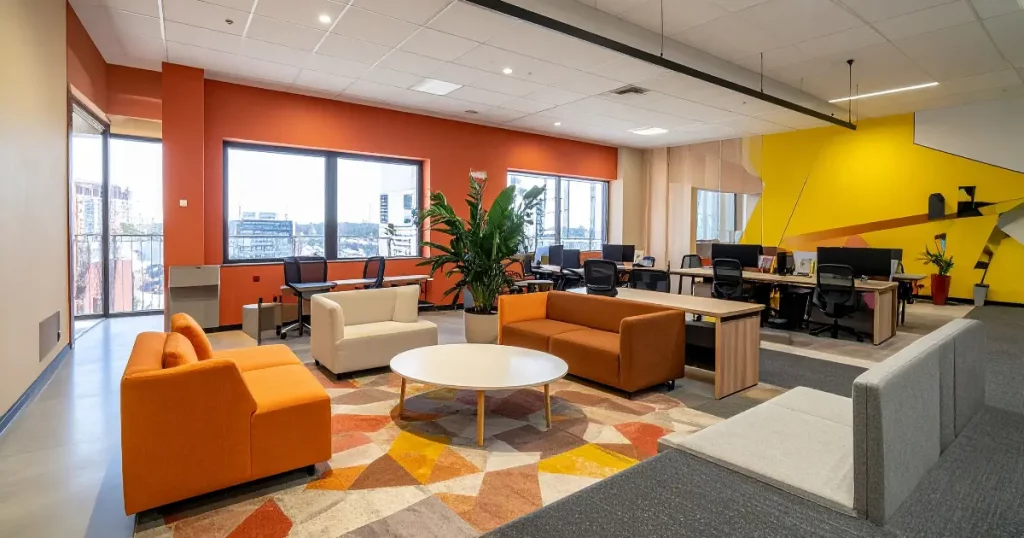
What Is Simpciry?
Simpciry is more than just a trend, it’s a lifestyle and design movement built around the idea that less truly is more. The term reflects the growing desire for calm, balance, and clarity in our everyday environments. By focusing on minimalist aesthetics and functional design, simpciry transforms cluttered spaces into serene sanctuaries that inspire peace of mind.
In an age defined by visual overload and digital distractions, simpciry encourages people to slow down, simplify, and surround themselves only with what truly adds value.
The Philosophy Behind Simpciry
At its core, simpciry is about intentional living. It’s not about stripping everything away, it’s about choosing with purpose. Every element in a minimalist space serves a function or tells a story.
Simpciry aligns with three fundamental principles:
- Clarity – Eliminating unnecessary visual noise creates mental calm.
- Functionality – Every piece of furniture or décor should serve a purpose.
- Harmony – Neutral colors, clean lines, and natural light blend to form a sense of balance.
By following these principles, anyone can turn an ordinary room into a timeless, peaceful environment.
Why Simpciry Is Gaining Popularity
Modern life often feels fast, cluttered, and overstimulating. The simpciry movement offers an antidote, a return to simplicity and mindfulness.
Here’s why it’s becoming a global interior design trend:
- Stress relief: Studies show that cluttered spaces increase anxiety. Minimalist interiors foster relaxation and focus.
- Sustainability: Simpciry supports conscious consumption fewer, higher-quality products that last longer.
- Digital detox: By simplifying physical surroundings, we indirectly create mental space and reduce digital burnout.
- Modern lifestyle fit: In urban apartments or compact homes, minimalist design maximizes both space and comfort.
Elements That Define Simpciry in Design
To create a truly minimalist environment, every design element must be thoughtful. The magic of simpciry lies in subtle details and deliberate choices.
1. Neutral and Natural Color Palettes
Whites, beige, greys, and earthy tones dominate simpciry-based spaces. These colors reflect natural light beautifully and promote a calm, open atmosphere.
2. Functional Furniture
Choose clean-lined, multifunctional furniture that blends utility with simplicity. Think modular sofas, wall-mounted storage, or convertible tables.
3. Negative Space
Simpciry values “breathing room.” Empty space isn’t wasted, it’s essential. It allows every object to stand out and gives the eye a place to rest.
4. Thoughtful Décor
Instead of filling every corner, simpciry encourages showcasing one or two meaningful art pieces, plants, or sculptures. Each item should reflect personality and purpose.
5. Natural Elements
Incorporating wood, stone, cotton, or linen introduces warmth and authenticity, ensuring minimalism doesn’t feel sterile or cold.
How to Bring Simpciry Into Your Home
Creating a minimalist home inspired by simpciry doesn’t require a full renovation. Start small, and work intentionally:
- Declutter with purpose. Remove items that don’t serve you or spark joy.
- Simplify surfaces. Keep countertops and tables clean, let your space breathe.
- Invest in quality. One high-quality, timeless piece is better than five trendy ones.
- Maximize light. Use large windows, sheer curtains, or mirrors to amplify brightness.
- Personalize gently. Add texture with rugs, greenery, or one statement artwork.
Even small changes like decluttering a single shelf can spark a sense of calm and clarity.
The Psychological Impact of Simpciry
A well-designed minimalist space has measurable effects on emotional wellbeing. People surrounded by clean, organized environments often report:
- Reduced stress and anxiety
- Increased productivity
- Improved focus and creativity
- Better sleep quality
By removing distractions, simpciry clears not just your space but also your mind. The home becomes a place of renewal rather than restlessness.
Simpciry and Sustainability
Minimalism naturally aligns with eco-conscious living. Buying less and choosing durable materials reduces waste and carbon footprint.
Simpciry encourages:
- Eco-friendly materials like bamboo, reclaimed wood, and recycled metals
- Energy efficiency through natural light and airflow
- Long-lasting products that reduce the cycle of fast furniture and décor trends
Living simply is living responsibly and that’s what makes simpciry not just stylish, but sustainable.
Applying Simpciry Room by Room
Living Room: Use open layouts, minimal furniture, and soft lighting. Add warmth through texture — not clutter.
Bedroom: Treat it as a sanctuary. Neutral bedding, soft textiles, and hidden storage create an inviting, restful vibe.
Kitchen: Keep countertops clear and tools accessible. Simpciry in the kitchen promotes both cleanliness and efficiency.
Bathroom: Use simple fixtures, subtle lighting, and smart storage to achieve a spa-like calm.
Each space becomes a reflection of mindfulness, beauty, and balance.
Simpciry Beyond Interiors
Simpciry extends into lifestyle choices from mindful consumption to digital decluttering. It’s about prioritizing quality over quantity in every aspect of life.
Whether it’s wardrobe, work habits, or relationships, the same principle applies: keep what adds meaning, release what doesn’t.
Also Read: Who Is the Most Powerful Doctor in the World?
Final Thoughts
Simpciry isn’t about emptiness, it’s about essence. It transforms not only the look of our homes but the rhythm of our lives. In embracing simplicity, we rediscover what truly matters: peace, purpose, and authenticity.
When done right, minimalist design doesn’t feel bare, it feels complete.
FAQs
Q1. What does “Simpciry” mean?
Simpciry represents a modern approach to minimalism that focuses on clarity, purpose, and balanced design.
Q2. How is Simpciry different from traditional minimalism?
While traditional minimalism focuses mainly on aesthetics, Simpciry blends design with mindfulness and sustainability.
Q3. Can Simpciry work in small homes?
Absolutely! In fact, small spaces benefit most from Simpciry, it maximizes openness and reduces clutter.
Q4. Does Simpciry mean I have to give up decorations?
Not at all. It’s about being selective, choosing meaningful, timeless pieces rather than excess décor.


